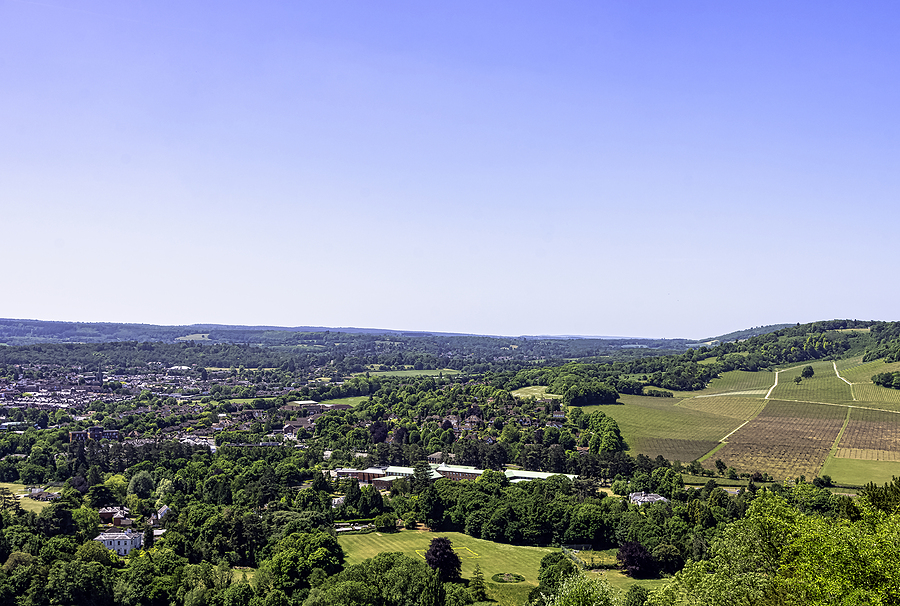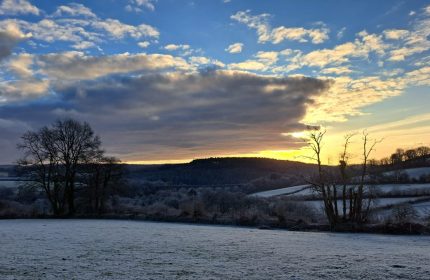A dozen or so things you never knew about The Surrey Hills
The fifteenth in our series of 'I never knew that about the beauty spots of Britain'
Britain is the most beautiful country in the world when the sun shines. And even when it doesn’t there are myriad tales and facts galore to enhance the beauty, whatever the weather. Here are some of them – they may make you want to go there….
A dozen or so things you never knew about The Surrey Hills (maybe)
The Surrey Hills consist of the stretch of North Downs running through Surrey from Farnham in the west to Tatsfield on the Kent border to the east and a range of Greensand hills to the south. The hills form an Area of Outstanding Natural Beauty and, although not 20 miles from central London, are deep countryside, with a wealth of delightful market towns, pretty villages, cosy pubs, woodland walks and fine views.
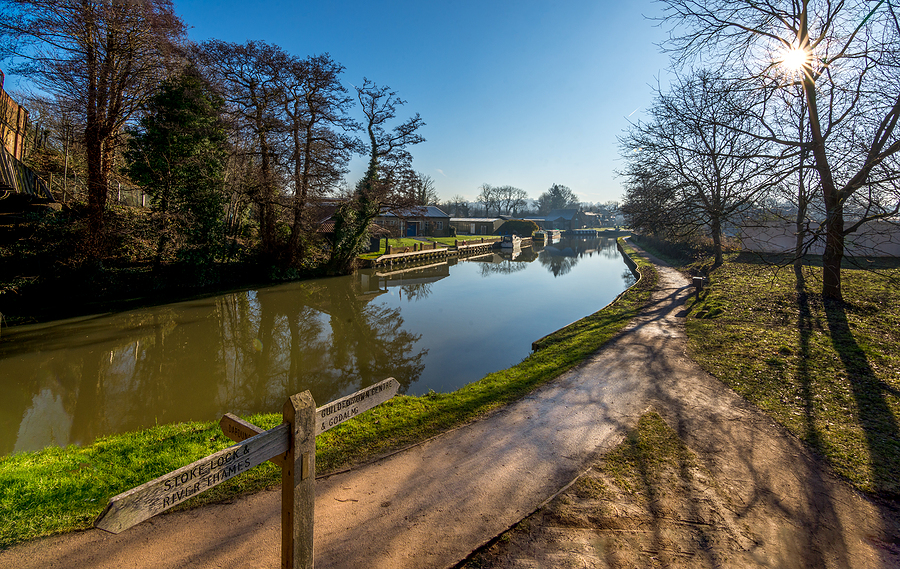
River Wey in Guildford by the university of surrey campus
- Guildford, Surrey’s county town, stands on the River Wey where it cuts through the North Downs. The Wey Navigation, whereby the Wey was made navigable between the Thames and Guildford, with the help of locks and canals, was opened in 1653 and is the oldest such Navigation in Britain. Guildford’s steep main street was named by Charles Dickens as ‘the prettiest high street in England’. Halfway up, beneath the cobblestones, is an ornately decorated chamber built in 1180 and believed to be the oldest synagogue in western Europe. And Guildford has a good claim to be the birthplace of cricket – a plaque on the Royal Grammar School at the top of the high street mentions the boys playing ‘creckett’ on the playing fields around 1550, the earliest known reference to cricket. P. G. Wodehouse was born in Guildford in 1881, Lewis Carroll was buried there, in the Mount Cemetery, in 1898 and in 1959 Britain’s first motor racing world champion, Mike Hawthorn, died in a car accident on the Guildford by-pass.
- Dorking, at the heart of the Surrey Hills, can boast the only home of a Pilgrim Father that survives intact. Shoemaker William Mullins lived in the house in West Street from 1612 until 1620 when he left for the New World aboard the Mayflower with his wife and daughter Priscilla, who later married the Mayflower’s cooper John Alden. Amongst their descendants are Presidents John and John Quincy Adams, Marilyn Monroe, Dick Van Dyke and Orson Welles. Laurence Olivier was born in Dorking in 1907.
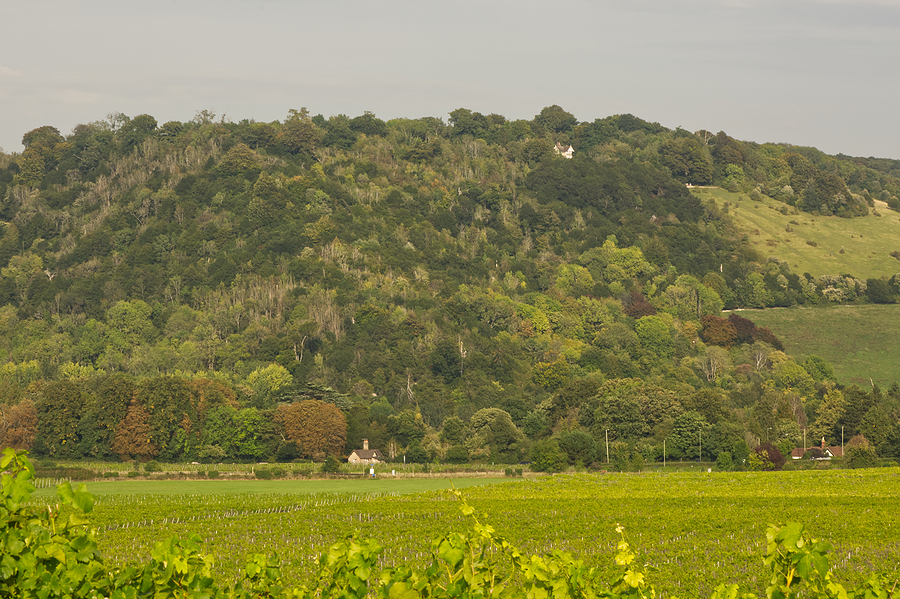
Box Hill on the North Downs countryside and rows of vines in vineyard, Dorking, Surrey, England
- Box Hill, overlooking Dorking, has long been the Surrey Hills’ most famous landmark and Jane Austen set the picnic scene from ‘Emma’ on Box Hill. She was drawn to the area by her admiration for Fanny Burney, who in 1797 built herself a cottage in Westhumble, beneath Box Hill, which she called after her most successful novel ‘Camilla’. Writer George Meredith lived in Flint Cottage on Box Hill for over 40 years and wrote his best known novel ‘Diana of the Crossways’ in the summer house he had built at the top of the garden. It is said that it was while walking along the Mole river beneath Box Hill that the composer Ralph Vaughan Williams heard the lark that inspired his piece, recently voted Britain’s favourite piece of music, ‘The Lark Ascending’.
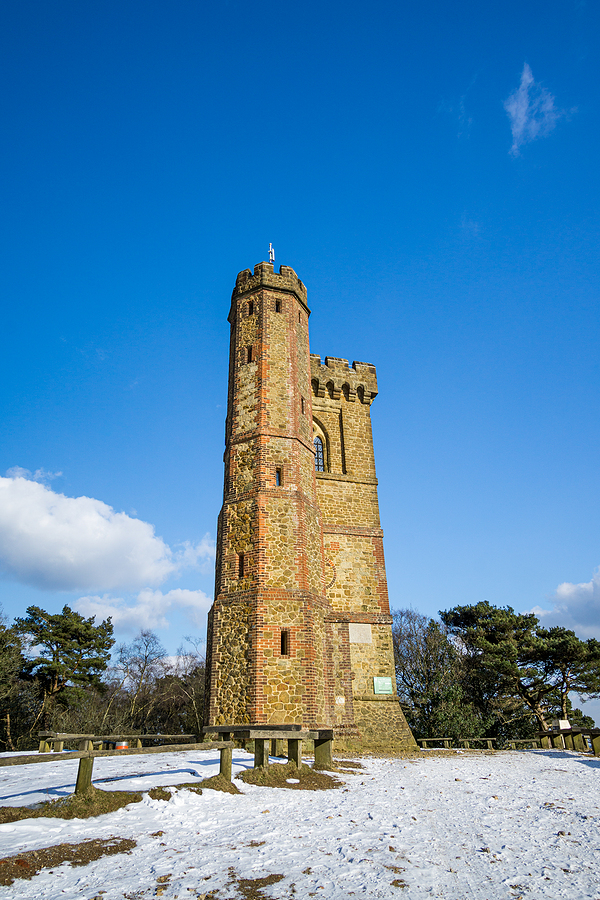
Leith Hill, Surrey, UK – 28th February 2018: A view of Leith Hill Tower on a cold winter’s day with snow on the ground
- Standing at the top of Leith Hill Tower you are at the highest point in south east England, at 1,029 feet. Below the tower is Leith Hill Place, childhood home of Vaughan Williams and, with its fine view across the Weald to the South Downs, thought to be the inspiration for E.M. Forster’s ‘Room With a View’. Forster lived in nearby Abinger Hammer.
- Buried in the old Saxon church in Albury is William Oughtred, tutor to Christopher Wren and rector of Albury for more than 50 years. A noted mathematician, he invented the slide rule and the multiplication sign ‘x’. The gardens of Albury Manor were laid out in the 1660s by the diarist John Evelyn, whose family lived nearby in Wotton House where Evelyn laid out Britain’s first Italianate garden. A renowned herbalist, John Evelyn gave his name to the soap and perfume retailer Crabtree & Evelyn.
- Almost the entire west wall of the church of St Peter and St Paul in Chaldon, on the downs near Caterham, is Britain’s oldest and most complete Doom, an illustration of Judgement Day, showing souls being carried up to Heaven or sent down to Hell. Painted in blood red it dates from the early 12th century, is 17 feet by 11 feet in size and contains the only image of the Ladder of Salvation found in England.
See part three – The Peak District
See part six – the Cumbrian Coast
See part seven – Aberdeenshire
See part ten – The Yorkshire Dales
See part fourteen- Monmouthshire
Find out more about Christopher Winn’s ‘I Never Knew That’ here
Latest posts by Christopher Winn (see all)
- A dozen or so things you never knew about Loch Lomond and Dunbartonshire - October 20, 2021
- A dozen or so things you never knew about Bedfordshire - May 18, 2021
- A dozen or so things you never knew about Berwickshire - March 18, 2021
- A dozen or so things you never knew about The Surrey Hills - January 26, 2021
- A dozen or so things you never knew about historic Monmouthshire - February 10, 2020








